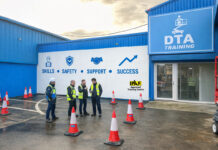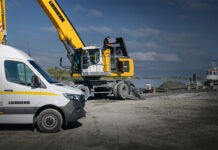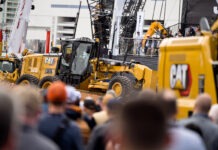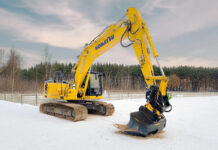GKD Technologies first to interface height and slew restriction technology in Tenstar’s Simulation Training machines.
Immersive training technology is seeing rapid growth within the construction sector. Advanced simulator development for construction site machinery is being implemented by many leading construction businesses, who are using leading edge technology simulation-based operator training, as a versatile and effective tool to train operators in a safe environment.
Tenstar Simulation, headquartered in Sweden, is a leader in its field of delivering simulation-based education tools for the construction industry.
Simon Hogg represents Tenstar in the UK, as the UK’s area sales manager. Hogg worked closely with Nick Ground, founder and innovation director of GKD Technologies, to interface the 2RCi rated capacity indicator within the Tenstar Simulators.
Hogg explained how the collaboration with GKD began, “My background is within construction and I have worked extensively with GPS suppliers. I have also worked on the rail side, as well as the civil side, and in the UK market safety devices are a key focus when it comes to training. We are also seeing a significant increase where these safety systems are becoming mandatory. They are already a compulsory requirement in the rail sector.”
“Nick and I visited a number of rail events and we discussed how we could integrate the GKD RCI system for height and slew on simulators in the first instance, and how simple it would be, and the project quickly emerged.
To my knowledge, this is the first time a simulation company has interfaced with a safety system like this (GKD Technologies). The best thing about the interaction with the 2RCi – it is exactly what it would be like to use in real site conditions on an excavator and the users could see how easy it is to set up the limits for height and slew.”
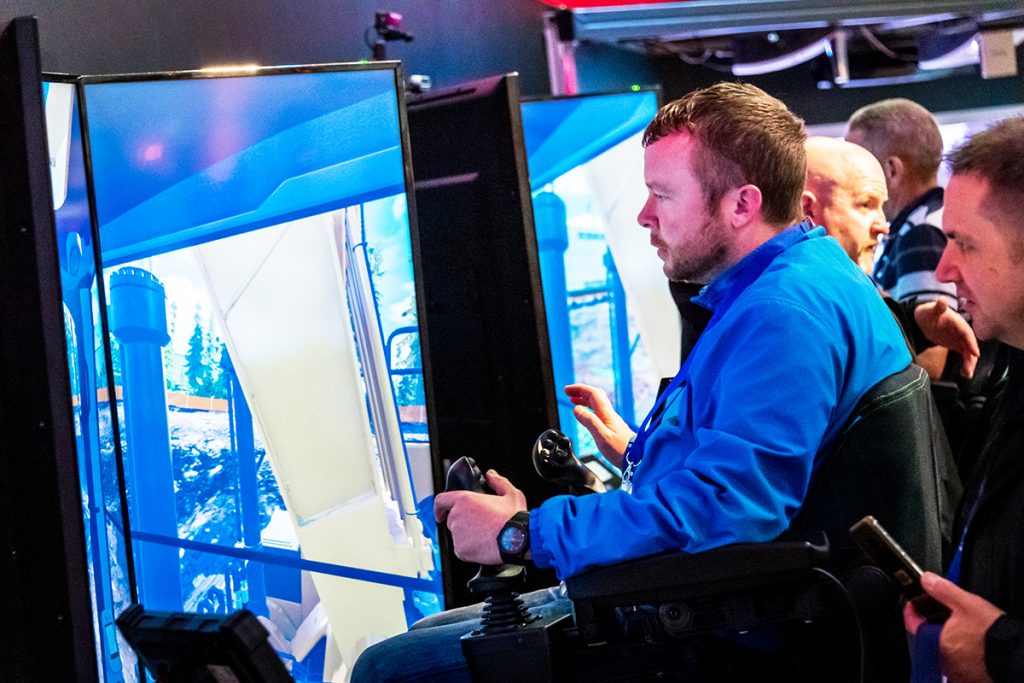
Hogg added, “The requirement for training and system familiarisation for operators is even greater, particularly in the civils sector, where there is a chronic shortage of trained and skilled operators. It’s reaching a critical point, particularly with the huge infrastructure projects, including HS2 – simulation training can offer a cost-effective and safe solution to operator training.”
“It is a real pleasure to be involved in such a safety-critical integration delivering top-class operator technology.” Concluded Hogg.
The idea of simulation training is that you can replicate a day or night scenario and train people from all different backgrounds and capabilities on how to use the GKD height and slew restrictors.
Nick Ground GKD’s founder and director of innovation explained, “One of the real challenges for GKD is often that the first-time operators see our product is the very first time they step into a machine and that could be during the day or night – the challenge is they need to be up to speed as fast as possible – without the pressure. By using a simulator, the operator is confident and ready to work efficiently the minute they arrive onsite!”
“The days of training by hanging off the side of an excavator in a live environment are gone, it is dangerous and with the advancement of simulators, totally unnecessary. There has been exponential growth in companies using these systems and big projects like HS2 and highways England and other major infrastructure projects are already using simulation technology to ensure safe operation on site.” Added Ground.
“Certainly, in the rail market where GKD has been the market leader for almost two decades, training occurs during the day, without the hustle and bustle of people around the machine and without the pressures of short deadlines, without experiencing that pressure, an operator really can’t operate safely and efficiently when they first come to work on a live site – so using a simulator provides them the familiarity they need with our system within the environment, and how to operate safely and efficiently.”
Nick concluded, “As we move forward the industry will expect to see more and more realistic ‘simulations’ and from a GKD perspective especially in the rail sector where they often carry out complex ‘tandem operations’ with machines working together.
In environments with the potential of working in dark and restricted areas – the contractor can be unsure of whether they can complete the job once they turn up on site, however, if you can ‘simulate’ the conditions and operations beforehand the operator can work out how to be more efficient given the constraints of height, slew and other site-specific issues.”



